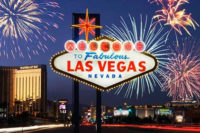About seven in ten U.S. employers offer a general wellness program, up from 58 percent in 2008, according to the Society for Human Resource Management. Not every program measures up to Google, which offers employees on-site physicians and nurses, nutritious food options, nap pods and complementary fitness centers. In fact, there’s a much cheaper route to good health: take a hike.
Many studies positively correlate time spent in nature with an individual’s well-being. Psychologically, time spent exercising in nature has been reported to not only reduce stress, and improve attention, but also positively impact mental restoration and coping with attention deficits.
A Norwegian study of 345,000 individuals found that those with lower rates of anxiety disorders were individuals who lived near parks, agricultural land, and other types of green space, regardless of income. In a survey conducted of 3,000 elderly Tokyo residents, those who lived in close proximity to a park or green space had lower rates of mortality as a result of cardiovascular disease.
Good news
This is potentially good news for the 80 percent of us who feel stressed at work. Nearly half of us say we need help in learning how to manage stress and 42 percent say our coworkers need such help. Well, it could be as simple as taking a walk.
“We know that an average of 22 minutes a day of physical activity – such as brisk walking in a national park – can significantly reduce the risk of heart disease and diabetes,” said U.S. Surgeon General Vivek H. Murthy.
As part of the burgeoning Park Rx movement, health care providers throughout the country are encouraging patients to use parks to reap the benefits of nature’s healing properties.
“Nature is good for us - it is a great antidote to a variety of ailments, including obesity, heart disease, and depression,” said U.S National Park Service Director Jonathan B. Jarvis at a National Park Rx Day event in Seattle in late April. “A growing number of public health officials now prescribe time in parks for the overall well-being of their patients. In fact, it is becoming a standard medical practice to tell patients to take a hike.”
There are 58 national parks in the National Park Service, but you don’t need to live near one to reap nature’s health benefits. Visit the American Hiking Society’s website www.americanhiking.org-hikes-near-you/ to find trails long and short, easy to extremely difficult, near wherever you live.
It’s never too late
The hiking habit came late to me. For years I’d run in nearby Valley Forge National Historical Park. But with aging comes the urge to power down. And after years of work there’s also an urge, at least for some of us, to slow it down. Get off the grid. Turn off the cell phone and email. Disconnect. I’ve been lucky enough to piggyback hikes off business trips, hikes to some gorgeous spots – Yosemite, the Grand Canyon, Arches, Zion, the Great Basin, Capitol Reef, the Appalachian Trail, Bear Mountain in the New York Catskills, beaches along the Atlantic and Pacific.
Safety motivational speaker John Drebinger lives 2.5 hours from Yosemite and regularly hikes and bikes there. He knows he’s a lucky man. Industrial hygiene consultant and ISHN columnist Dan Markiewicz plans on hiking with his son up in Montana’s Glacier National Park this summer. I told him one safety tip: stick to the trail. That’s a mistake I made in the Badlands several years ago. Straying off the trail I cartwheeled down a ravine like a tumbleweed, broke my pelvis, fractured some ribs, and needed to be choppered out of the park. Dan said he’d try to stay safe, but he’s an adventuresome sort, and offered no guarantees. So much for a risk-averse safety and health professional.
Take your time
You can stretch your legs – and your mind – with a good walk that’s not at all risky. You see employees on lunch breaks ambling through corporate campuses and on the streets of corporate parks. Out in Phoenix, an 80-year man climbed the 2.3-mile trail on Squaw Peak (elevation 1,208 feet) daily for 30 years. He’d go slow and say hello to everyone.
Just keep in mind what Thoreau said: “I am alarmed when it happens that I have walked a mile into the woods bodily, without getting there in spirit. The thought of some work will run in my head and I am not where my body is--I am out of my senses. What business have I in the woods, if I am thinking of something out of the woods?”
Point well taken. There’s one more reason to take a hike. It might help put the “E” back in “EHS.” Gallup finds 42 percent of Americans identify themselves as environmentalists, down from an average of 76 percent in the late 1980s and early 1990s. Some of it has to do with the polarized politics of climate change. And baggage comes along with environmentalism, as in tree-hugging and protesting pipelines.
Follow Thoreau’s lead and keep your head in the woods when walking. Don’t think about the “stuff” out there. It’ll be there when you get back. Just forget about it and indulge in a little do-it-yourself health promotion. No personal trainers, no performance coaches, no competition, no goals, ideally no clock. Be safe, and put the “E” and the “H” – health – back into EHS.




